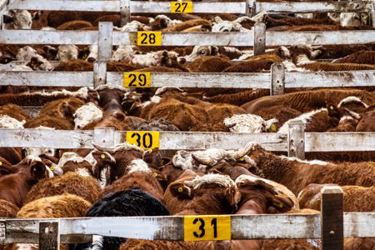U.S. EPA Updating Slaughterhouse Wastewater Rules For First Time In 20 Years


In the latest development from a U.S. EPA administration that is cracking down on industrial wastewater regulations, the agency is expected to revisit its rules for livestock processing operations for the first time in decades.
“The U.S. Environmental Protection Agency intends to update its water pollution rules for slaughterhouses for the first time in nearly 20 years … following a lawsuit from environmental groups arguing current standards are too weak,” Reuters reported. “The EPA’s move to update meat and poultry industry standards is part of a proposed consent decree that would settle litigation with community and environmental groups who sued the agency late last year over the issue.”
According to the report, these operations are among the highest emitters of phosphorus and nitrogen, significant contributors to toxic algal growth in source water. And their environmental impact seems to take a toll in an area this EPA administration has vowed to address, with 74% of meat plants that discharge wastewater to surface waters located within one mile of low-income communities or communities of color, per Reuters.
“Neighboring communities have increasingly complained that the discharges have dirtied their environment and drinking water,” Reuters reported. “Just 300 of the nation’s 7,000 meat and poultry slaughter and rendering plants are covered by existing water discharge standards, which apply to plants over a certain size that discharge directly into streams, lakes or oceans, according to EPA documents.”
Similarly, livestock farms have come under EPA scrutiny for their own wastewater practices. For those focused on source water quality, regulations for these operations are overdue.
“Despite the requirements of the Clean Water Act, the EPA has not updated pollution control standards (called ‘effluent limitation guidelines’) for large slaughterhouses since 2004,” according to Environment America. “Standards for smaller facilities were last set in 1975, and there are still no treatment standards for facilities that send their wastewater to sewage plants.”
While the industrial operations that would be forced to comply with any revised regulations would certainly have a different outlook on their impact, it seems like the EPA is set on revisiting them. The ultimate effects on source water are yet to be seen.
To read more about how water systems and agricultural wastewater operations address nitrogen and phosphorus, visit Water Online’s Nutrient Removal Solutions Center.
